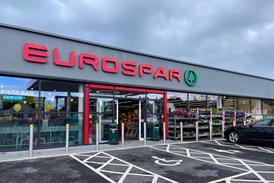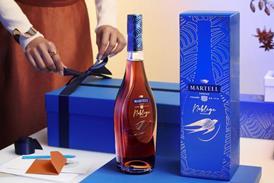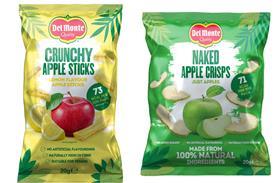- Home
- Retail & Wholesale
-
Products & Suppliers
- Back to parent navigation item
- Products & Suppliers
-
Product Categories:
- Back to parent navigation item
- Product Categories:
- Alcoholic drinks
- Bakery
- Cereals & breakfast
- Cheese
- Chicken & poultry
- Chocolate
- Confectionery
- Crisps, nuts & snacks
- Dairy
- Fish
- Fresh produce
- Frozen
- Household
- Meat
- Own Label
- Sauces & condiments
- Seasonal
- Soft drinks
- Vaping
- Vegan & plant-based
- World foods
- Suppliers
- People
- Reports & Data
-
Topics A-Z
- Back to parent navigation item
- Topics A-Z
-
Popular topics:
- Back to parent navigation item
- Popular topics:
- Cost of living crisis
- Crime
- Deposit Return Schemes
- Finance
- Government & Regulation
- Health
- Inflation
- Loyalty
- Marketing
- Mergers & Acquisitions
- New Product Development
- Sourcing
- Supply chain
- Sustainability & environment
- Technology
- Ultra Processed Foods
- Vaping
- A-Z all topics
- Content by type:
- Events
- Ask iA (beta)
- Subscribe now
- Previous slide
- 3 of 3
- Next slide
| Streetbees data | |||||||||
|---|---|---|---|---|---|---|---|---|---|
| Source: Streetsbees poll of 706 consumers, May 2019. Streetbees reveals how people behave bny analysing real-life moment with machine learning and natural language processing. Visit streetbees.com | |||||||||
| 8% consumer energy drinks at least once a day | |||||||||
| 81% believe energy drinks are full of artificial and unnatural ingredients | |||||||||
| 48% of energy drink avoiders would be more likely to buy an energy drink if it was made with natural ingredients | |||||||||
| 48% feel there isn't an energy drink brand that highly resonates with them | |||||||||
| 42% are more likely to drink a Coca Cola Energy drink than a traditional energy drink | |||||||||
| Energy drink sector performance by value sales | ||
|---|---|---|
| Value (£m) | % growth | |
| Regular Everyday Energy | 100.3 | 0.0 |
| Regular Stimulation | 71.9 | 3.5 |
| Diet Stimulation | 43.3 | 26.2 |
| Diet Everyday Energy | 24.0 | 1.5 |
| Three fastest growing retailers by value | ||
| % change | ||
| Co-op | 35.0 | |
| Aldi | 28.8 | |
| Tesco | 8.9 | |
| Source: Kantar 52 w/e 24th Feb 2019 | ||
| Category value share | % value growth | |
| Tesco | 23.9 | 8.9 |
| Asda | 15.9 | 4.3 |
| Sainsbury's | 11.4 | 5.7 |
| The Co-Operative | 10.3 | 35.0 |
| Morrisons | 9.8 | 1.7 |
| Iceland | 3 | 5.5 |
| Lidl | 2.5 | 2.2 |
| Aldi | 2.1 | 28.8 |
| Waitrose | 1 | -28.0 |
| Brands vs own label | ||
| Value (£m) | % growth | |
| Brands | 221.2 | 6.3 |
| Own Label | 18.3 | -6.5 |
Energy drinks have seen a healthy growth rate this year of 5.2%, which is faster than total grocery but behind total soft drinks.
The standout sector for growth is stimulation. Kantar classes these as drinks that rely on more heavy-duty ingredients than glucose, such as caffeine and taurine.
The total value of these drinks climbed £11.4m, driven by the recruitment of 200,000 new shoppers over the past year. Consumers are also purchasing more frequently, particularly from its diet segment.
By contrast, everyday energy drinks – which use glucose as their primary energy source – failed to recruit new shoppers last year. That has led to a much slower growth rate of just 0.3% in value.
Overall, average prices have risen 1.5% across energy drinks, which can be attributed to the impact of the soft drinks levy and a move away from deals.
The shift away from volume promotions is most noticeable in everyday energy, led by Lucozade. The brand moved away from its X for Y strategy last year in favour of temporary price reductions.
Co-op was the fastest-growing retailer, up more than a third to hold 10% category share. That was boosted by a strong Christmas period, when Emerge and Lucozade did particularly well.
Aldi was the second fastest-growing, with this growth driven by own-label offerings such as its Red Thunder product. However, the discounter still undertrades in energy drinks with just over 2% market share.
Helen Sale,
Kantar
| Top ten sports and energy drink brands by value sales | ||
|---|---|---|
|
|
|
|
|
|
Value sales (£m) |
% growth |
|
LUCOZADE |
409.3 |
5.0 |
|
RED BULL |
336.4 |
12.4 |
|
MONSTER |
216.4 |
21.1 |
|
ROCKSTAR |
50.7 |
-1.1 |
|
EURO SHOPPER |
46.5 |
4.8 |
|
RELENTLESS |
40.7 |
-11.4 |
|
BOOST |
20.2 |
5.5 |
|
EMERGE |
17.8 |
-23.0 |
|
PURDEYS |
12.5 |
35.2 |
|
POWERADE |
5.2 |
-18.8 |
|
|
|
|
|
|
|
|
|
Source: Nielsen 52 w/e 16th February 2019 |
|
|
The top three brands drove the majority of growth with their original, full-sugar versionsThe top three brands – Lucozade, Red Bull and Monster – drove the majority of growth with their original, full-sugar versions. Together, they added over £94m to the energy drinks category.
This was partly down to their distribution across impulse channels during the British heatwave, says Nielsen senior client services manager Laszlo Zsom.
The most interesting case here is Lucozade. Last year, sales of its energy drink were tanking following reformulation. By contrast, Zsom says this year’s growth was “about evenly driven by their energy and sports drinks business”. Zsom singles out the brand’s limited edition ‘Larazade’ bottles, which launched in September, as a key driver of growth.
A key trend in the market is ‘natural’ energy drinks. Demand for these formats is evidenced by the rise of Purdey’s, which added £3.2m to its sales – the sixth-largest gain in the category, according to Nielsen’s Zsom.
Although not among the top 10 brands, Zsom points out fellow ‘natural’ player Tenzing is also in growth.
By contrast, the brands playing at the value-for-money end of the market such as Relentless and Emerge have declined this year. Together, they have shed £10.5m. That’s not just down to changing tastes. “Their losses are partly due to losing some of their physical availability in stores, a trend that has continued over the last few years,” says Zsom. Nielsen Scantrack monitors weekly data from a national network of EPoS scanners to represent sales in grocery multiples, co-ops, multiple off-licences, independents, forecourts, convenience multiples, symbols and online grocery retailers.






